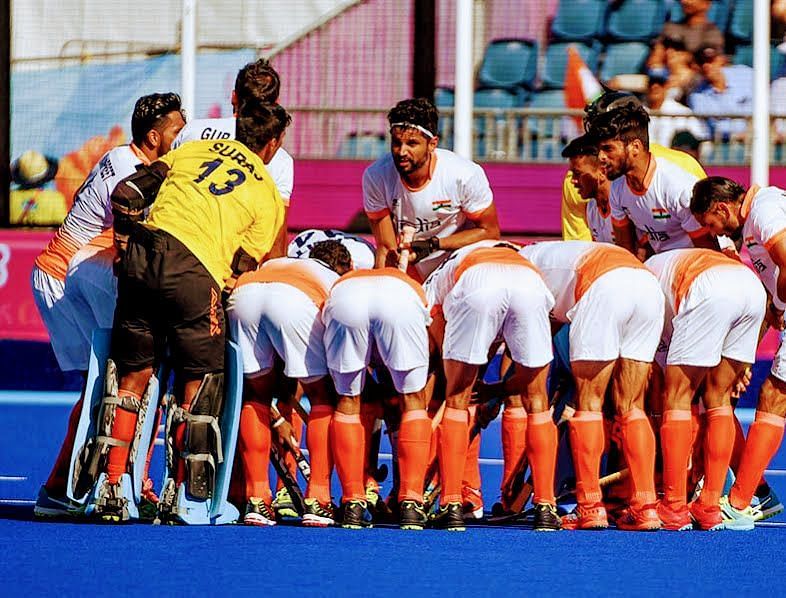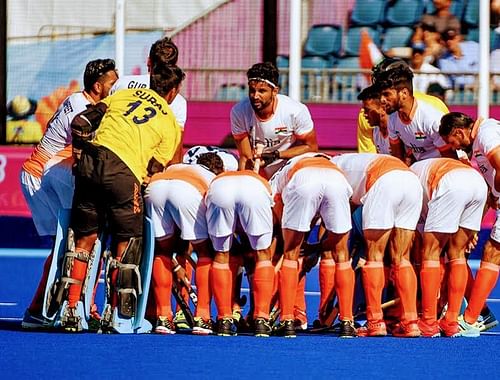
Commonwealth Games 2018: Was the Gold Coast debacle a blessing in disguise?

The knives are out, yet again, in the Indian media, with the coaching staff finding themselves at the forefront of a multipronged attack.
The reason? India's failure to end with a podium finish at Gold Coast.
Four months into 2018 and with three tournaments done and dusted, tough questions are being asked as to the reasons behind the team's fourth-place finish at Gold Coast.
India were a wee-bit unfortunate against New Zealand and were not too lucky with the referees, as Sjoerd Marijne pointed out. The Indian strikers found the post twice instead of the back of the net, and New Zealand's third goal that came from a PC was questionable.
In the bronze medal match against England, India missed umpteen chances, some by a mere whisker, with the ball centimeters away from the outstretched sticks in front of an open goalmouth.
India's overall performance was lackluster
For argument's sake, if India had managed to scamper home in either of these two encounters, they would then have returned home as heroes, adorned with medals and any critical evaluation would have been drowned in the euphoria of the moment.
The fact remains that the Commonwealth Games does not feature the creme-de-la-creme of the hockey world and a podium finish, while highly desirable, is not necessarily indicative of superiority in the game at large. What is indeed worrying is not the inability to bring home a medal but the fact that the Indian team looked a shadow of their former selves and were totally at sea for the most part.
Colin Batch's Australian side were the top-ranked team in the competition and played like the top-ranked team. India were, ostensibly, the second mightiest after Australia at Gold Coast. Yet, in which match (if any) did India display the prowess or the skill which they are so renowned for?
India did not look dominant, or even comfortable in a single encounter. A lot of brouhaha followed after the first match with Pakistan with the Indian fans pinning the blame on the video referee. While the decision to award a PC was no doubt erroneous, India were a vastly superior side and should have put the match beyond Pakistan's reach much before the dying minutes instead of hanging on to a slender one-goal lead.
There was hardly any improvement in the second match as well with Wales, ranked 24th, giving the Indians a run for their money and SV Sunil saving the day for India with his individual brilliance. One shudders to think what might have happened if Wales had managed to split points with India much like the Pakistanis did.
India stuttered to victory against Malaysia to clinch a last-four place and the last-minute pyrotechnics against England in the pool match was, in retrospect, an aberration that enabled attention to be diverted away from the underperforming Indian outfit.
It was New Zealand, and not India, which always looked like the second-ranked team in the competition, recording emphatic wins with big margins in their pool matches and deservingly winning the silver medal.
Where did the Indians seem deficient in and what can be done?
Gold Coast Report Card
The Indian defence seemed overly reliant on Harmanpreet Singh and Rupinder Pal Singh. The latter's injury may have been because of prolonged spells on the pitch and havoc seemed to prevail in the Indian circle whenever either of them was absent. Varun Kumar seemed ill at ease on a few occasions and Amit Rohidas seemed overworked.
The Indian defence, however, were paying the price for glaring errors in the midfield with the opposition strikers finding their way into the Indian 25 with little or no resistance near the half-way line.
India's midfield seemed to rest on the shoulders of one man. Captain Manpreet Singh seemed to marshal the Indian midfield singlehandedly and perhaps the excessive pressure of doing so led to him making a few errors himself, like gifting the ball away to the Black Sticks which resulted in a goal.
Vivek Sagar Prasad has oodles of talent for sure and will one day be a force to reckon with. For now, though, it would be unfair to expect the young lad to take on the best strikers in the world. The young midfielder was undone by New Zealand who were literally toying with him, and the diminutive figure of Vivek surrounded by the tall and stocky New Zealanders was not a pleasant sight to behold for an Indian fan.
Sumit and Chiglensana were, sadly, not on song and the Indian defence had to soak up the pressure of a non-performing midfield by having to ward off a barrage of attacks.
A lot has been said about the non-performance of the Indian forward-line who were unable to capitalize on a two-man advantage when New Zealand were down to nine in the semifinal! Here again, part of the blame has to be shared by the midfield who were unable to efficiently feed the strikers near the circle.
The Indian drag-flickers were tenaciously charged down, time and again before they could execute their flicks while the Indian runners were unable to inflict the same damage on the opposition.
The problem of plenty
Lack of adequate talent is an issue which many selectors worldwide have to grapple with. Can an abundance of talent also be an issue?
India literally played two sets of teams in the Azlan Shah Cup and in the Commonwealth Games, sifting through a core group of 33 probables. Coach Sjoerd Marijne told us post the Commonwealth Games that the team from now on would consist of 24 who would then compete for a place in the playing 16 (or 18) as the case may be.
The most important question is if the Indian selectors have indeed achieved what they set out to. The inexperienced juniors finished fifth in the Azlan Shah Cup but impressed with their skills. The more illustrious squad finished a disappointing fourth and failed to impress at Gold Coast.
So, where does this leave us?
When the Indian juniors won the World Cup in 2016, coach Harendra Singh went on to say that his team would win the Olympic gold in 2020 and enter the semi-final of the 2018 World Cup. Perhaps they will (albeit under Sjoerd Marijne).
In order to get there, however, India first needs to win the Asian Games. In all probability, the team which helps India get to Tokyo may not necessarily be the one playing in Tokyo. For now, the Indian management may have to fall back on old hands rather than rely purely on fast legs.
The vast experience of Sardar Singh in midfield and Ramandeep Singh up front may prove invaluable.
The Champions Trophy will likely be played in the shadow of the FIFA World Cup. It is unlikely that the players will complain, however, as India will have to punch well above their weight to challenge Argentina, Australia, Belgium, and Holland, and will look to do so away from the glare of the media and with minimal pressure.
Perhaps, the Indian coaching staff do know precisely what they are aiming at. Perhaps the Commonwealth Games too was an effort to identify the best combination. Perhaps it is for the best that the deficiencies have been laid threadbare and that tough corrective measures will follow.
If India excel in the Champions Trophy in Breda against the most formidable teams in the world, all will be forgiven, and Sjoerd Marijne's boys will march to Jakarta with nothing less than gold and Tokyo on their minds.